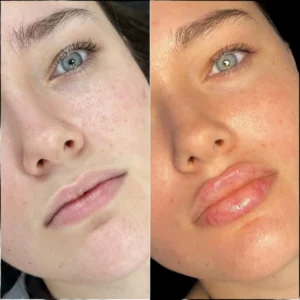Gynecomastia, or the enlargement of breast tissue in males, is a condition that can be emotionally distressing and physically uncomfortable. While it can occur due to hormonal imbalances, certain underlying health conditions, or lifestyle factors, one of the lesser-known but important causes is the use of specific medications. These drugs can disrupt hormone levels, leading to the development of this condition over time. Understanding which medications are known to cause gynecomastia and how to respond is crucial for those seeking early prevention or managing current symptoms. For individuals affected by this issue, exploring options for gynecomastia treatment may become a necessary part of their healthcare journey.
Understanding How Medications Influence Hormonal Balance
Gynecomastia results from an imbalance between estrogen and androgen levels in the body. While men naturally produce small amounts of estrogen, it’s typically balanced out by higher levels of testosterone. When this balance is disturbed, even slightly, breast tissue can begin to grow. Medications that either increase estrogen production, reduce testosterone levels, or interfere with hormone receptors can cause this hormonal shift.
These effects are not always immediate and can sometimes appear after long-term usage, making it difficult for patients or doctors to trace the cause. Moreover, certain individuals may be more genetically predisposed to react to these hormonal shifts, making them more susceptible than others even on the same medication.
Common Medications Known to Cause Gynecomastia
A wide range of medications has been linked to the onset of gynecomastia. Here are the most common categories and examples:
1. Anti-androgens
Anti-androgens are often used to treat conditions like prostate enlargement, prostate cancer, and other hormone-related disorders. Drugs such as spironolactone, flutamide, and bicalutamide fall under this category. These medications block testosterone receptors or reduce testosterone production, tipping the hormonal balance toward estrogen, which can lead to breast tissue growth.
2. Anabolic Steroids and Androgens
Paradoxically, anabolic steroids—often misused by athletes and bodybuilders—can also cause gynecomastia. While these drugs initially boost testosterone levels, the body responds by converting excess testosterone into estrogen through a process called aromatization. Over time, this can result in gynecomastia, especially if the steroids are used without medical supervision.
3. Cardiovascular Medications
Some heart medications are known culprits as well. Calcium channel blockers like verapamil and digoxin, used for managing heart rate and blood pressure, have been associated with breast tissue growth. The exact mechanisms aren’t always fully understood, but it’s believed that they may interfere with testosterone activity or stimulate estrogen receptors.
4. Antidepressants and Antipsychotics
Several mental health medications can alter hormone levels in the brain. Drugs such as risperidone and haloperidol are antipsychotics that increase prolactin levels, which can trigger gynecomastia. Certain SSRIs (Selective Serotonin Reuptake Inhibitors) used to treat depression and anxiety have also been implicated, although less commonly.
5. Anti-ulcer Medications
Cimetidine, an H2-receptor blocker used to treat ulcers and acid reflux, has estrogen-like properties and can lead to breast development when used over extended periods. While newer alternatives like ranitidine and famotidine are considered safer in this regard, cimetidine remains a concern where gynecomastia is observed.
What You Can Do If You’re Affected
If you suspect that a medication you’re taking is contributing to gynecomastia, the first step is to consult your healthcare provider. Never discontinue or change medication without professional guidance. Your doctor may suggest switching to an alternative drug that doesn’t carry the same hormonal risks. In some cases, if the medication is essential and alternatives are not viable, a management strategy may be developed to monitor symptoms and minimize discomfort.
Additionally, hormone level testing can help determine whether the cause is medication-induced or related to an underlying health issue. Imaging tests such as ultrasound or mammography may also be used to rule out other conditions, including breast cancer or lipomastia, which can mimic gynecomastia but have different origins and treatment paths.
Reversibility and Treatment Options
In many cases, stopping the causative medication can lead to partial or complete resolution of gynecomastia, particularly if the condition is in its early stages. However, if breast tissue has become fibrotic over time, it may not fully regress on its own.
Treatment options depend on the severity and duration of the condition. For mild or recently developed gynecomastia, observation and lifestyle changes may suffice. In persistent cases, medications like tamoxifen or raloxifene, which block estrogen receptors, might be prescribed. Surgical interventions, such as liposuction or mastectomy, are considered for more severe or long-standing cases.
Preventing Medication-Induced Gynecomastia
Prevention starts with awareness. If you’re beginning a new medication known to potentially cause gynecomastia, speak with your doctor about the risks and any early signs to watch for. Periodic monitoring of hormone levels and breast tissue, especially during the first few months of treatment, can help detect the issue before it progresses.
It’s also important to maintain a healthy lifestyle—this includes limiting alcohol, avoiding recreational drugs, and keeping your weight in check. Obesity can contribute to hormonal imbalances and exacerbate drug-induced effects, making prevention efforts less effective.
Conclusion
While gynecomastia can be a distressing condition, understanding its link to certain medications empowers individuals to act early. With careful monitoring and medical guidance, most cases can be managed effectively or even prevented altogether. If you’re currently taking or have recently started a medication that has been associated with gynecomastia, don’t hesitate to discuss it with your healthcare provider. Early recognition and informed choices are key to reducing risk and achieving better outcomes.






